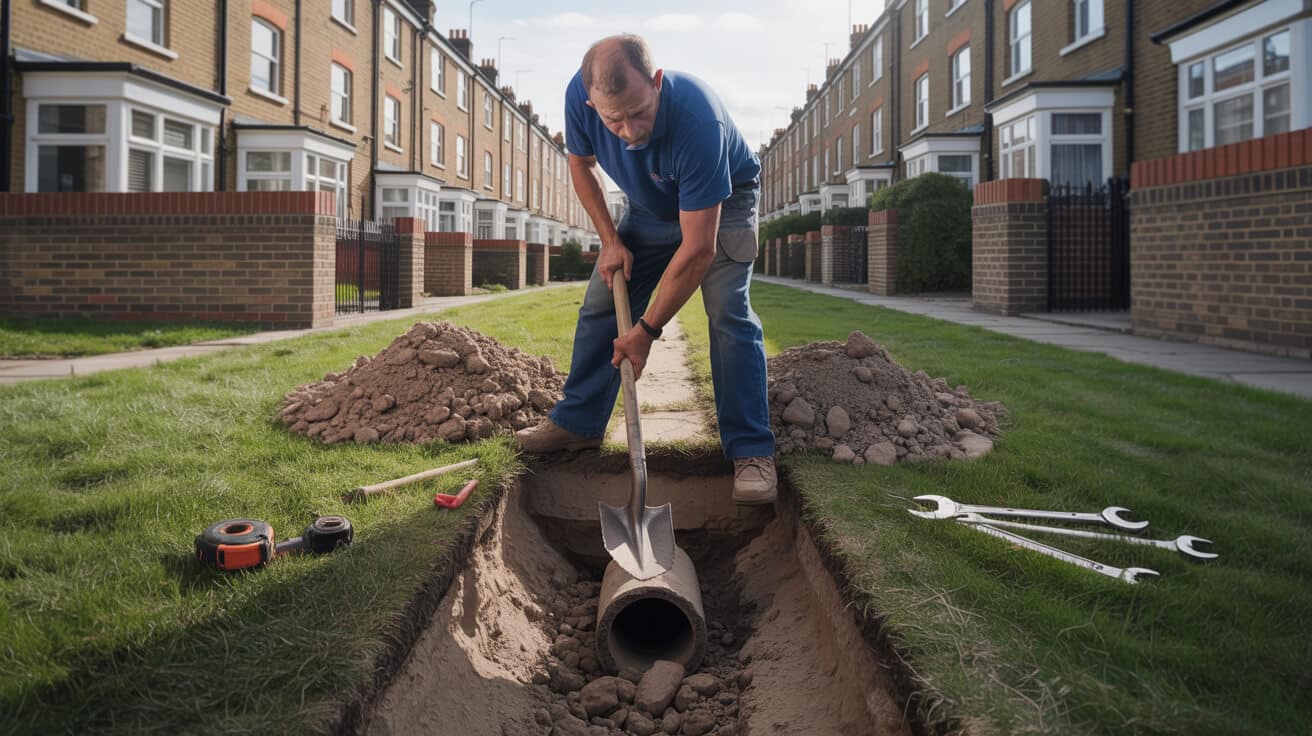 What Size Boiler Do I Need a Guide to Choosing The Right Capacity
What Size Boiler Do I Need a Guide to Choosing The Right Capacity

Why Getting Your Boiler Size Right Means More Than Comfort
The question of boiler size isn’t just another item to tick off your to-do list—it’s the difference between years of silent, reliable warmth and a persistent headache of rising bills, compliance problems, or tenant grumbles that just won’t end. For every UK homeowner, landlord, agent, or facilities manager, the boiler is a quietly critical asset: it powers comfort, protects property value, and sits right at the centre of running costs and legal responsibilities.
A mismatched boiler can quietly drain money or comfort for years before anyone traces the problem.
When it’s wrong-sized, everyone feels it—sometimes slowly, sometimes overnight—but the fallout is always real. Undersized systems produce “cold spot” rooms and stretched hot water during morning scrambles. Oversized ones short-cycle, wasting gas, voiding warranties, and fast-tracking the next callout (Viessmann). It goes further: energy ratings (EPC/MEES), insurance validity, and tenant safety duties are all linked to getting this one decision right.
Too many properties run on lazy guesswork—“what did the last builder fit?” or “buy the biggest you can afford”. But UK building standards tighten every year, tenants expect dependable heat, and insurance firms are catching mismatches on audit. The smart move is sizing based on your property as it is today—not the average, not your neighbour’s, but a design fine-tuned for your exact build, usage, and compliance footprint.
Can You Spot the Signs of a Badly Sized Boiler Before Trouble Hits?
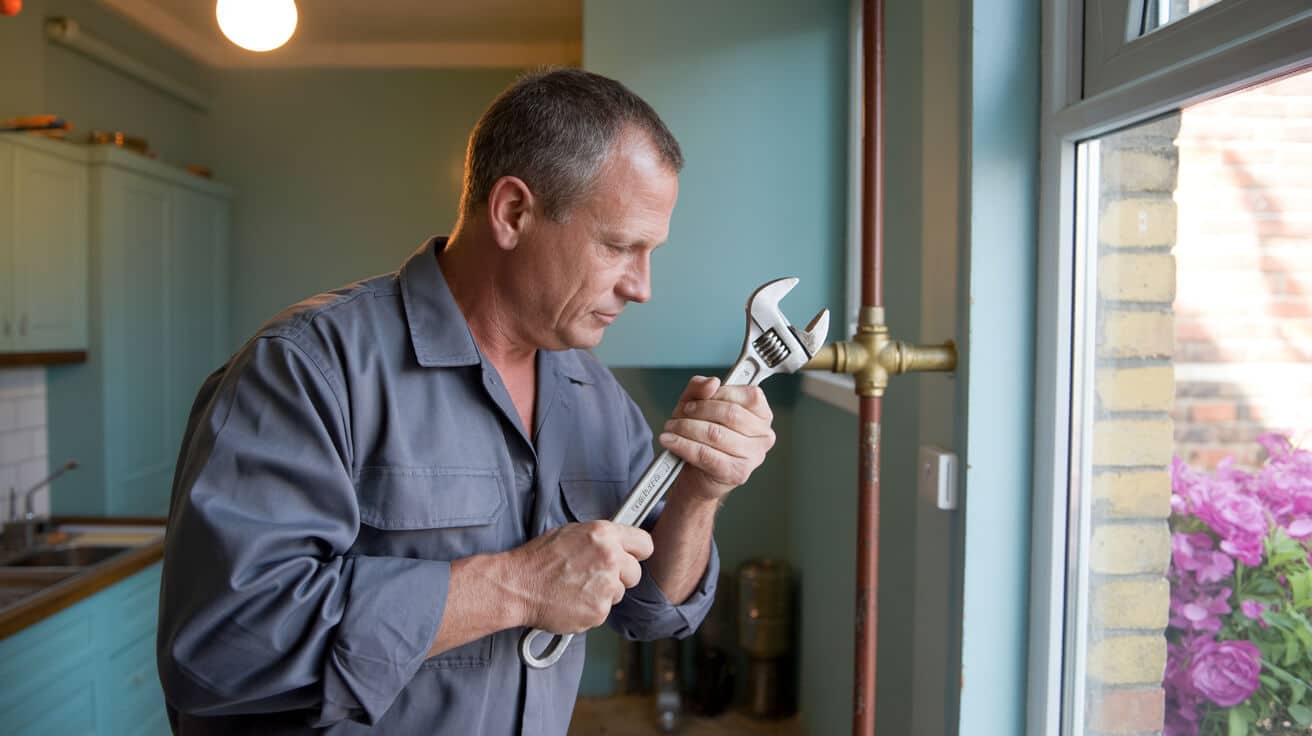
Boiler sizing mistakes usually announce themselves through a trail of faint signals that escalate if ignored. The problem is, those signals often blend into the background—until someone links the dots between cold bedrooms, tepid showers, energy spikes, or breakdowns that keep repeating.
Constant fiddling with the thermostat or mysterious energy spikes are your system’s way of asking for help.
Warning signs anyone can spot
- Chilly rooms or inconsistent warmth: If radiators never quite reach setpoint or a specific room refuses to heat, an undersized or poorly balanced system is often to blame.
- Energy bills shift for no obvious reason: An overstretched boiler will guzzle extra fuel to keep up. HomeServe estimates that wrong sizing can add upwards of £200 to annual bills in the UK ([HomeServe](https://www.homeserve.co.uk/heating/boiler-help-and-advice/new-boiler-guides/what-size-boiler-do-i-need/?utm_source=openai)).
- Breakdowns or strange noises: Early cycling and component wear spike when your boiler is too powerful for the radiators or hot water setup—“short cycling” kicks in as the boiler never settles into a sustained burn.
- Hot water runs out or pressure drops: This is classic with undersized combis or system boilers that weren’t matched to actual peak use.
The real giveaway isn’t just one fault—it’s the pattern. If you’re making excuses for temperature gaps, blaming the weather, or adjusting timers in hopes of a miracle, your system is shouting for a qualified engineer to investigate.
A single property survey—ideally by a WRAS-approved engineer—gets to the truth faster than endless guesswork, saving you hidden costs and hassle later.
Does Boiler Type Matter as Much as Capacity?
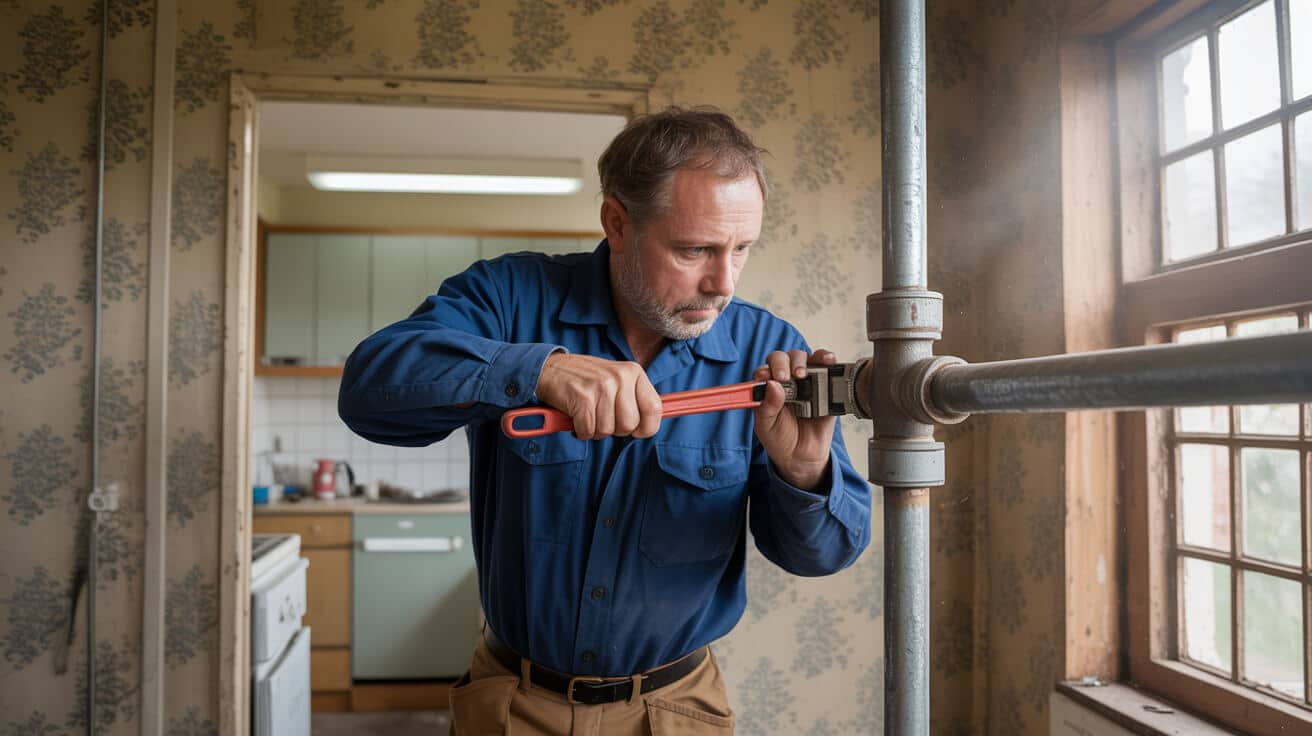
Choosing the “right” boiler isn’t purely a numbers game. The type—combi, system, or regular—directly determines which needs you can meet. In the UK, property variety and changing usage patterns make this choice arguably as important as kW output.
Picking boiler type and size without tying both to your daily life is like fitting a new door but leaving it unlocked.
When each boiler wins (and loses)
- Combi boilers: Best for smaller properties where water demand never spikes in two places at once. They’re nimble, space-saving, and avoid tank or cylinder headaches, but can only serve so much hot water at speed.
- System boilers: Designed for larger homes, multi-bathrooms, or busy times when several showers or taps might run together. They supply through a cylinder, pulling off smoother performance and easier upgrades over time.
- Regular (conventional) boilers: The default for properties with legacy setups, high radiator counts, or non-standard layouts—offering the most stability, provided tanks and pipework are up to par.
Most missteps come from underestimating future use: plans for a loft extension, Airbnb guests, or a garden office can all tip a “perfect” boiler into chronic shortages or waste. A top-tier engineer thinks years ahead, specifying not just today’s requirements but tomorrow’s flexibility—protecting your investment against remodels or regulation updates.
What Really Goes Into a Pro-Level Boiler Sizing Calculation?

Online tools might ask for radiator count or floor area, but real sizing is layered and site-specific. Skilled engineers blend thermal calculations with lived reality—knowing that no calculator spots an airlock-prone corner, an insulated-for-two-century facade, or pipe runs snaking through a freezing utility room.
Algorithms can crunch numbers, but only an engineer catches everything that could go wrong or right.
What professionals always measure
- How radiators are distributed—not just how many: Room volume, insulation, and glass area affect requirements. For instance, a south-facing conservatory needs different output than a master bedroom tucked in the north gable ([Energyguide.org.uk](https://energyguide.org.uk/boiler-size-calculator/?utm_source=openai)).
- Bathrooms and peak hot water demand: Frequent overlap from multiple showers, large tubs, or big households calls for extra hot water “headroom”.
- Insulation values, age, and building materials: A Victorian terrace leaks heat far faster than a modern eco-home with triple glazing and insulated block work.
- Everyday life quirks: Do you host students? Run a beauty business? Is the spare room now a home office? Each use changes energy signatures.
- Expansion, green upgrades, or zoning plans: Factoring in new bathrooms, solar instals, or future zone controls keeps your system adaptable.
There’s also a compliance layer: meeting MEES, EPC and G3 unvented standards can mean replacing or upgrading parts most online wizards ignore completely.
Do Online Sizing Calculators Actually Serve UK Properties—or Miss the Mark?
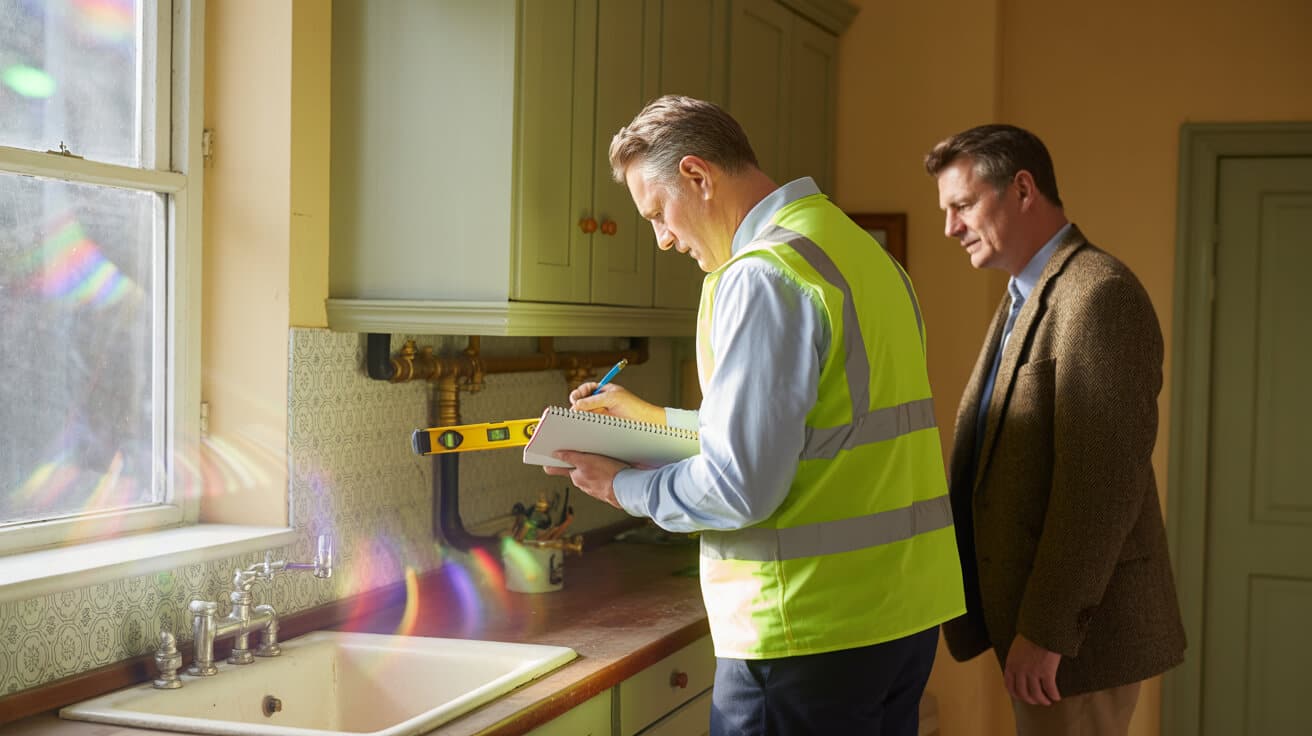
Online calculators are fine for a ballpark, but in practice, UK properties resist standardisation. Many homes are bigger or quirkier than the “average”, have retrofitted insulation, draught corridors, or use models phased out years ago.
- Irregular layouts, tank-fed systems, or business spaces: Calculators ignore that a home office above the garage or a tenant flat out back compounds the load.
- Pressure, old pipework, and extensions: No algorithm knows if your pipes are half a century old, or if an extension’s pipework is lagged or exposed.
- Legal and compliance blindspots: Online advice never writes a compliance certificate, nor will it save you if an MEES audit or insurance query exposes a misfit boiler.
It’s all too common: inherited advice or boiler models that simply don’t fit current needs, causing issues at every inspection.
The consequences bite faster for landlords and managers: failed inspections, EPC flops, or insurance coverage gaps when evidence shows a poor installation. Only a qualified, on-site engineer can tick the compliance box for MEES, EPC, WRAS, and G3 standards—closing off sneaky risk at every audit (Which?).
What Size Boiler Usually Suits Common UK Property Types?

National data and installer experience give certain ranges as a reference. Even then, a survey refines the choice, especially if your property is extended, atypical, or has commercial characteristics that shift standard requirements.
Below is a table for quick reference—right sized according to typical property types:
Here’s where most fall in the UK:
| Property Type | Bedrooms | Radiators | Bathrooms | Typical Boiler Size |
|---|---|---|---|---|
| Flat/Small House | 1–2 | up to 10 | 1 | 24–27kW Combi |
| Mid-size Home | 3–4 | 11–15 | Up to 2 | 28–34kW Combi or System |
| Large/High Demand | 5+ | 16+ | 2+ | 35kW+ System/Regular + Cylinder |
| Commercial/Complex | Multi | 20+ | Many | Custom Solution—Needs Survey |
(Adapted from HomeServe, Viessmann, Baxi Commercial)
Renovations, annexes, or holiday lets demand tailored feature fitting—the difference between “fine most years” and always having enough heat and hot water, even on the coldest nights or busiest turnover weekends. A property that looks “typical” on paper can hide upgrades or quirks that tip the numbers, making a professional review the safest bet.
What Improvements Will the Correctly Sized Boiler Actually Deliver?
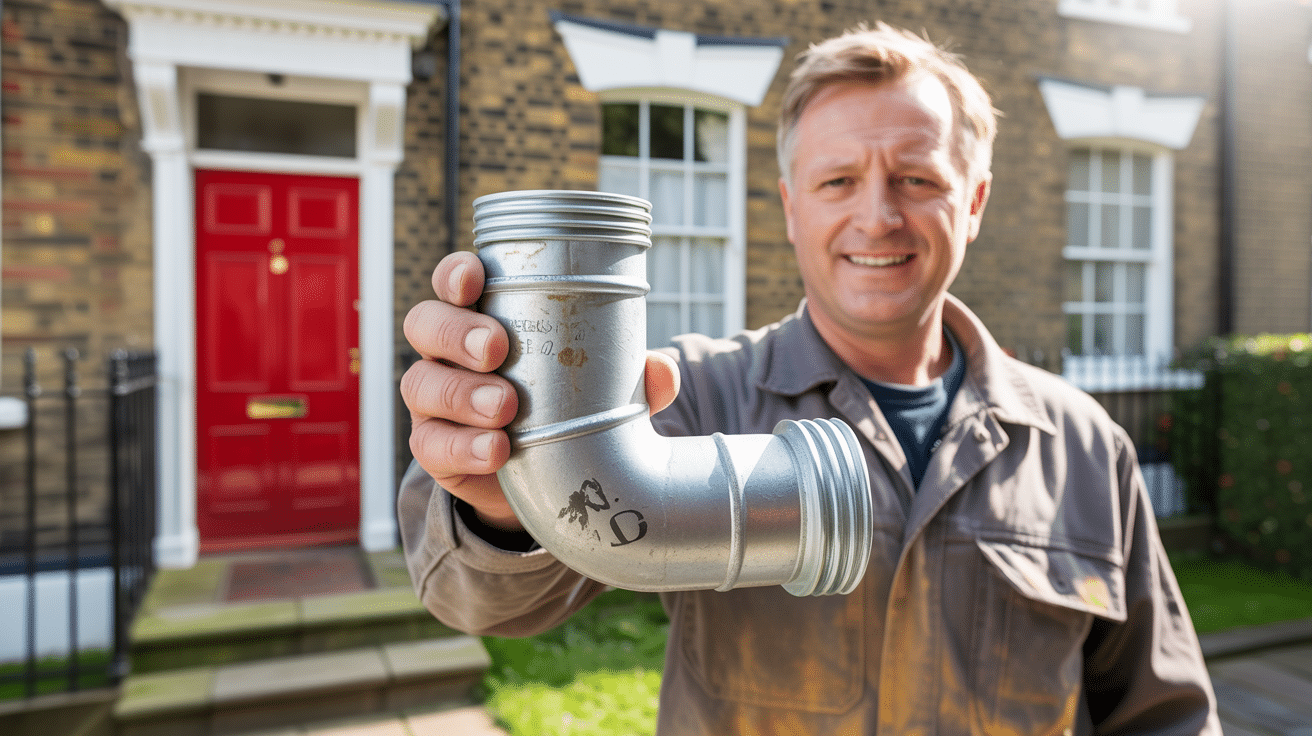
The best heating solution should be invisible in the best sense: you forget about it, guests stop commenting, and no one’s running out in a towel to yell about cold water again.
You remember bad heating; great heating is so reliable it disappears.
Tangible benefits of a perfect fit
- Reliability in every room: Expect fail-safe warmth—not just where the thermostat sits, but even in the rarely used corner office or guest ensuite.
- Lower running costs: Fitting by the numbers, not by guesswork, typically means £150–£350 off bills annually just from efficiency and lower callouts ([EnergySavingTrust.org.uk](https://energysavingtrust.org.uk/advice/boilers/?utm_source=openai)).
- Longer system life, less hassle: Well-sized boilers run quieter, last longer, and need far fewer urgent repairs.
- Proof-ready compliance: Correct sizing is a shortcut to MEES, EPC, and manufacturer approval—so you’re always ready for that next letting, audit, or sale.
- Upgrade pathway: Whether you’re planning zoned controls, renewables, a bigger cylinder, or smart thermostats, starting with the right boiler means upgrades won’t be a headache.
The bonus is confidence—no more second-guessing, no more renting heaters in a cold snap, and no apprehension over the next compliance letter.
Why Make Plumbers 4U Your First Call for Boiler Sizing?
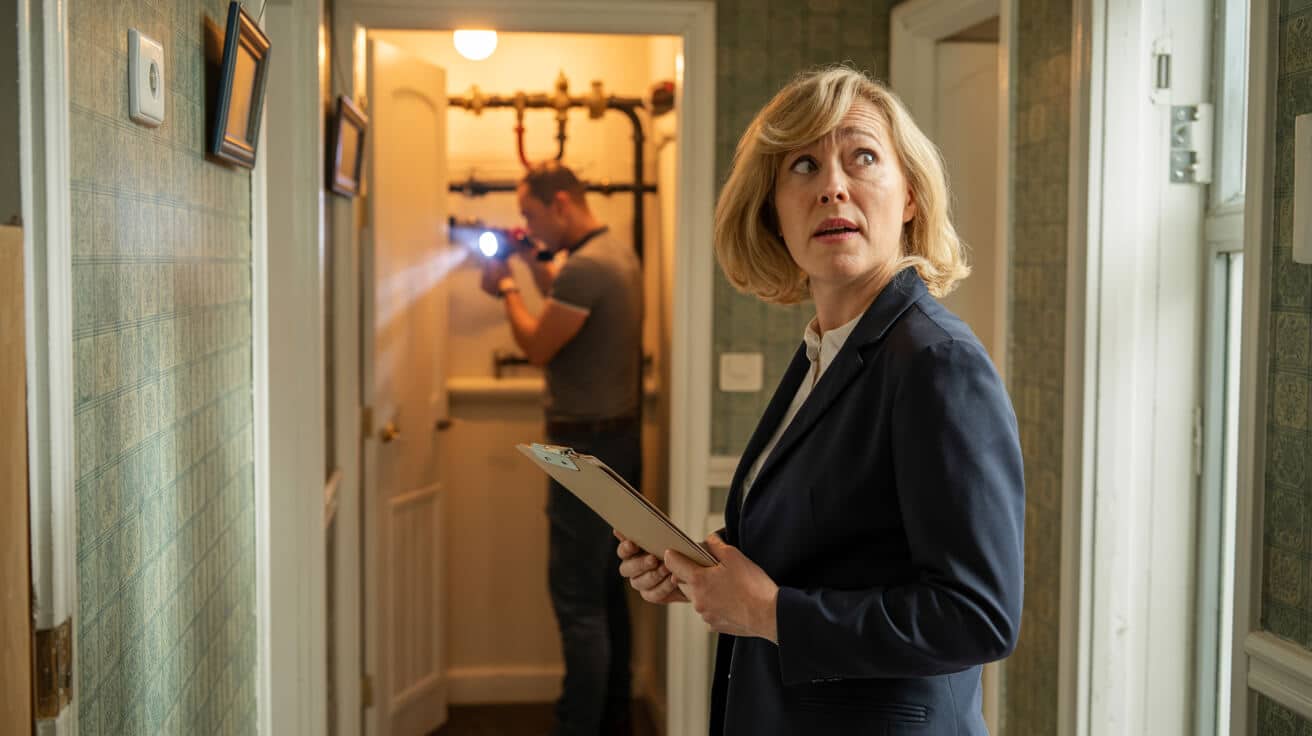
Proper system sizing isn’t a look-up-table job. It’s a blend of on-site skill, system-wide thinking, and commitment to every regulation—wrapping peace of mind and regulatory certainty up with comfort.
No half-measures—every system checked, compliance documented, controls explained.
Here’s what sets Plumbers 4U apart:
- Engineer-grade credentials: Every one of our team is WRAS- and G3-certified, working to Part L, Part G, and MEES standards, meaning safe, lawful instals from the first visit.
- All-in fixed quotes—no gotchas: What’s on the paperwork is what you’ll pay, with itemised details, so you stay in control.
- Full photo and paperwork handover: See before-and-after with your own eyes, and walk away with the paperwork needed to prove compliance for every inspection or EPC.
- Spotless finish, zero mess: Homes and workplaces are handed back tidier than found—hundreds of verified reviews back that up.
- Lasting aftercare and support: We log every system, teach clients every setting, and back it up with checklists, documentation, and future-works advice.
Landlords, agents, or multi-site owners: repeat business and referrals tell the storey better than any guarantee. We earn trust not just with results, but transparency and clarity at every step.
Book Your Custom Boiler Sizing Survey With Plumbers 4U
The future of your heating system—and the comfort it brings—starts with a professional assessment, not a rough guess. By calling in a WRAS- and G3-certified Plumbers 4U specialist, you get a full assessment of every room, load review, and a report that makes system design, compliance, and cost transparency easy.
Twenty minutes with a qualified engineer beats a week lost to online guessing and second-guessing.
Whether you’re safeguarding a family home, upgrading a rental, or juggling compliance across a portfolio, your choice today ensures smooth winters, easier audits, and long-term savings. Join the growing number of owners, agents, and property managers who don’t just survive the audit game—they set the standard.
Book your bespoke survey with Plumbers 4U today—and secure comfort, compliance, and confidence, every season.
Frequently Asked Questions
What are the hidden dangers of guessing your boiler size—or just reusing the “old one”?
Choosing your next boiler by “best guess” or simply like-for-like sounds harmless, but it holds real and often invisible consequences for your comfort, bills, and your legal standing as a property owner or manager. A too-small boiler will underperform at peak demand—think cold radiators during winter cold snaps, running out of hot water during back-to-back showers, or lengthy reheat times when you’ve got guests or tenants in. Oversize your boiler, and you lock in years of unnecessary fuel costs, fail modern energy benchmarks, and risk component fatigue far earlier than planned. Silent but significant: new regulatory checks and insurer demands now make correct sizing a matter of paperwork as much as comfort.
The system you never notice is the one built exactly for you.
What are the early red flags that your current or planned boiler isn’t right?
- Radiators or hot water temperature lag behind expectation, even after servicing
- Boiler frequently cuts out, resets, or throws fault codes—especially during group use (multiple bathrooms, business hours)
- Energy or gas bills trend up despite no obvious changes at the property
- Engineers raise eyebrows over updated compliance rules (MEES, G3), or ask to see historic paperwork during quote visits
A credible engineer will tie together actual hot water demand, total heat loss, radiator count, and your property’s occupancy rhythm—a survey, not a guess, is now standard. It’s no longer enough to “go with what’s always been there.”
How are compliance and rental value risked by a mis-sized boiler?
Landlords and letting agents face real jeopardy as MEES minimums tighten (now EPC Band E baseline, likely Band C by 2025), and insurance or lending hinges on audit trails matching system output to property needs. For business managers and local authorities, property inspectors increasingly want to see your logic behind every plant room upgrade. Take guesswork out of the equation and you’ll sleep better at night—and stay one step ahead of compliance shifts.
How do experienced engineers determine the exact boiler size and system for your building?
Engineers from trusted providers like Plumbers 4U step way beyond online “bedroom calculators” or simple square footage estimates. Their approach opens with a site walk: every room, radiator, and hot tap is clocked, noting real-time occupancy (think: school run, shared office, or guest turnover patterns), property orientation, insulation levels, and legacy quirks like annexes or outbuildings. Engineers also ask what’s changing: Are you planning a loft extension, switching the main bathroom to a wet room, or splitting the property for rental? Each tweak may affect not just output, but compliance and warranty.
How does a best-in-class site survey go deeper than a generic quote?
- Logs actual radiator and MVHR counts, plus outlet timings
- Measures heat loss by reviewing construction, window spec, and existing insulation against BS6700 and Part L software tools
- Cross-references with MEES, G3, WRAS, and EPC requirements—built from the latest standards, not decade-old averages
- Ties in upcoming lifestyle or use changes: converting a garage, hybrid working, or letting to new tenants
- Hands over a full calculation report—with visual diagrams and engineer notes—that is accepted by insurers and mortgage lenders without question
A thorough assessment isn’t just about today’s usage but predicts future risk, lifespan gaps, and supports seamless compliance with landlord and sales documentation.
Why is the engineer’s audit essential for insurance and futureproofing?
Insurers can and do reject claims on heating failures or leaks if boiler/cylinder size or controls weren’t matched to legal requirements at point of instal or upgrade. By mapping out every zone and demand profile, you not only sidestep insurance grey areas but also keep future renovation options open—avoiding expensive upgrades or retrofits if regulations pivot yet again.
Why does boiler type matter beyond simple kW output—and how does it affect compliance?
Selecting between combi, system, or regular boilers goes much deeper than number-chasing. Combi boilers deliver instant hot water with no need for storage tanks, making them the darling of postcodes with limited space or single occupancy. But scale up—bigger homes, multiple bathrooms, rental HMOs, or commercial units—and a combi can quickly bottleneck, leaving occupants without enough hot water when it’s needed most. System boilers, in contrast, pair a hot water cylinder with direct supply, ideal for home offices, guest bedrooms, and properties planning for future growth. Regular (sometimes called heat-only) boilers come into their own with older properties, larger hydraulic networks, historic vented systems, or anywhere resilience and backup storage is prized.
If your heating plan ignores tomorrow’s needs or new compliance, you’re already behind.
How does the wrong system selection strain both comfort and regulatory checks?
- Using a combi where multiple showers or taps run in parallel leads to serious pressure drops, turning routine into crisis for tenants or users
- System or regular boilers outperform in dwellings with guest turnover, extended family, or spa/bath features—essential for compliance when WaterSafe and WRAS review tap flow consistency or backup provision
- Upgrades, like annexes or offices, often necessitate adding cylinders, zoning, or blending underfloor with radiator heating—upfront choices here ensure the next survey is simple, rather than a headache
A hybrid or system-led instal may cost more today, but repeated callouts, unhappy tenants, or late regulatory summonses usually cost far more tomorrow. Plumbers 4U matches system logic to use-case, not just catalogues or current floorplan.
Which factors—often missed—can radically shift the correct boiler capacity for your unique property?
Surface metrics—floor area and radiator headcount—set a baseline, but real output needs flex dramatically based on local variables and lived behaviour. What’s hiding within your four walls may upend textbook advice:
- Insulation drift: That “well-insulated” label may mask poor top-up, missing cavity fill, or insufficient loft lagging—making 30% or more difference to heating needs
- Usage clustering: Peak-time demands, such as school mornings, shift changes, or multi-tenant let-outs, dramatically spike simultaneous hot water use
- Legacy system quirks: Thermostatic valves left off, dead runs in old copper pipework, or ancient TRVs frequently undermine the calculated ideal unless surveyed and balanced
- Direct hot water draw-off versus indirect system: Mistaking one for the other results in persistent temperature drops or legal compliance gaps
- Extensions, annexes, or garden suites: Each “bolt-on” affects circuit flow, pressure, and may require a bigger expansion vessel or rebalancing
How do shortcut methods and “rules of thumb” go wrong?
- Overestimating needs (leading to oversizing, fuel waste, repeated short cycling)
- Failing to document changes after upgrades—causing warranty or insurance void, and extra costs during MEES or EPC reviews
- Underappreciating hot water + heating “tandem” use scenarios, so winter peaks leave areas cold
The only fool proof instal comes from blending engineering standards (Part L, BS6700) with genuine site experience and anticipating usage changes—anything else is rolling the dice.
What are the current boiler size benchmarks—and where do they break down in the real world?
Reference guidelines help but remain a starting point, never a full answer. Modern UK owners and managers can expect these average benchmarks:
| Property | Bedrooms | Radiators | Bathrooms | Reference Boiler Size |
|---|---|---|---|---|
| Studio/Flat | 1–2 | ≤8 | 1 | 24–27kW Combi |
| Semi/Small House | 3–4 | 9–12 | 1–2 | 28–34kW Combi/System |
| Large Detached/Lodge | 5+ | 15+ | 2+ | 35–40kW+ Sys/Reg |
| HMO/Commercial | Multi | 20+ | Many | Custom—Site Survey |
Engineers use these as waypoints, not finish lines—open-plan conversions, full-house refurbishments, or new build standards can bump requirements up or down by 25% or more. Annexes, tenanted sublets, or commercial adaptations demand a defensible calculation, certified for property managers, letting agents, and council handovers.
It’s the exceptions—not the rules—that test your heating for decades.
Guidelines crumble where properties are multi-zoned, recently renovated, mixed-use, or preparing for smart/remote upgrades like advanced zoning, weather compensation, or heat pump-ready circuits. A bespoke calculation and site survey cement comfort, energy savings, and compliance resilience.
How does a site audit by a certified engineer safeguard both your upgrade and your compliance?
A real-world site survey does more than confirm which system fits—it now underwrites insurance, unlocks energy grants, and slashes future admin for refinances, sale, or letting. An on-site engineer with tools in hand checks your property’s age, pipe routing, water pressure, and insulation as well as functional use patterns. They calibrate flow, pressure, output, and assimilation to new regulations (EPC Band E+ for landlords, WRAS for direct supply, G3 for unvented cylinder instals). The documentation provided makes boiler, controller, and system upgrades transparent for auditors, insurers, buyers, and tenants alike.
What only an in-person inspection can catch:
- Legacy faults after DIY or undocumented works—critical for commercial and landlord compliance
- Unbalanced or undersized radiator runs—avoiding future cold spots or inefficiencies
- Blocked valves, dead pipework, or hard water risks which digital calculators or remote quotes cannot detect
- Futureproofing by mapping out zoning upgrades, remote control compatibility, or secondary circuit plans
A proper site survey with Plumbers 4U ends with action-ready paperwork—accepted by councils and insurers as proof against both heating and legal nightmares. If you’re a landlord, portfolio owner, or managing agent, this audit is the best investment you’ll make for uptime and regulator harmony. For homeowners, it’s your comfort and your resale value—locked in for the years ahead.
Which UK regulations, installer certifications, and compliance records matter for a smooth and legal boiler upgrade?
Britain’s heating landscape is ruled by a shifting patchwork of law, technical benchmarks, and paperwork—being out-of-date or under-documented can stall lettings, insurance, or even property sales:
- WRAS Certification: Mandatory for all water fittings directly from mains—to prove system won’t risk water quality or backflow contamination
- G3 (Unvented Cylinder) Certificate: Any high-pressure storage system, by law, requires instal and annual service by a G3-certified engineer; paperwork will block both insurance and resale lacking it
- MEES/EPC: All private rented homes (and many HMOs) must meet EPC Band E or better, with the boiler and controls central to the rating; failure means enforcement, not just advice, under current law
- Part L and BoilerPlus: Revised Habitation and Building Regs mean new or replacement boilers must hit ERP benchmarks, use modern controls, and comply with installation standards for zone control, weather compensation, or load control
- Commercial Gas Safe: Any multi-unit or higher-output instal must be commissioned and notified by a commercial-grade engineer, with annual documentation
- Full Building Control Sign-Off/Benchmark: Supplies the audit trail confirming design, instal, verification, and handover—essential when selling, insuring, or re-mortgaging
The right paperwork is the difference between stress-free upgrades and an endless stream of emails and call-backs.
Plumbers 4U’s commitment: every instal comes with a full file for YOUR asset register and next inspection, pre-empting compliance shifts, insurance rejections, and council spot checks—securing your investment for rental and future sale.
How do you lock in both optimal comfort and compliance for your boiler—today and into the future?
Comfort, confidence, and rule-proofing hinge on starting with a professional survey, using only certified installers, and extending thorough handover and maintenance records. When your engineer tests pressure, draws system diagrams, and compiles a compliance pack, you gain more than a working boiler—you gain system resilience, landlord leverage, and a paperwork path clear for every next compliance update, insurance renewal, or sale.
- Begin with a documented site assessment and sizing calculation—logged to your property or portfolio
- Insist on a compliance-ready installer—qualified for every UK certificate needed (G3, WRAS, GasSafe, Building Control)
- Secure full digital/physical handover: warranty, usage/training, service intervals, and compliance record included
- Book annual servicing and recertification for peace of mind on G3 and insurance
- For upgrades or expansion (zone adds, smart controllers, heat pump integration), ask for an upgraded system plan to stay ready for tomorrow’s needs
Book your professional audit and installation through Plumbers 4U, and you’ll never again worry a compliance email, cold room, or insurance query will catch you out. Where safety, comfort, and legal peace come built-in—year after year.

